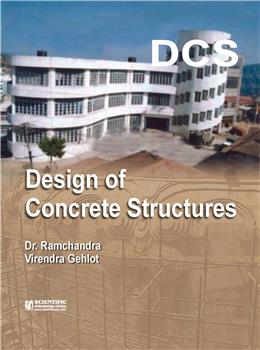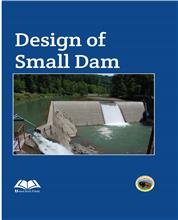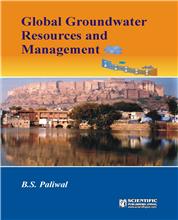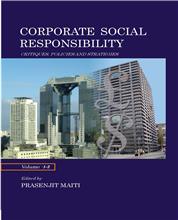Part - I. Concrete Structures, its Service Life, Concrete, its Constituents and Design Codes and Specification
1. Introduction
1.1 Introducton, 1.2. Concrete, 1.3. Cements, 1.4. Cement Tests, 1.5. Aggregates, 1.6. Other Types of Aggregates, 1.7. Fitness modulus of aggregates 1.8. Water, 1.9. Admixtures, 1.10. Reinforcement, 1.11. Storage of Materials, 1.12. Properties of Concrete, 1.13. Requirements of Durability (IS: 456-2000), 1.14. Concrete Mix Proportions, 1.15. Limits for Deleterious Mix Constituents, 1.16. Concrete in Aggressive Soils and Water, 1.17. Compaction, Finishing and Curing, 1.18. Concrete in Sea-Water, 1.19. Shape and Size of Component Members, 1.20. Environmental exposure conditions, 1.21. Nominal Concrete cover to reinforcement, 1.22. Quality of Fine and Coarse Aggregates, 1.23. Quality of Water, 1.24. Permeability of Concrete, 1.25. Curing of Concrete, 1.26. Compaction of Concrete, 1.27. Concrete in Foundations, 1.28. Durability of Steel, 1.29. Fire Resistance of Concrete Structures, 1.30. Requirements and Aim of Design, 1.31. Service Life of Concrete Structures, 1.32. Design Codes and Specification.
Part - II. Loads, Strength, Factors of Safety and Methods of Design
2. Loads, Strength of Materials, Factor of safety, Methods of Design
2.1. Introduction, 2.2. Dead Lodes (Permanent Loads) (D.L.), 2.3. Live Loads (Variable Loads/Imposed (Live) Loads) (LL), 2.4. Wind Loads (WL) Transient Loads, 2.5. Snow Load (Exceptional Loads), 2.6. Seismic Loads (Exceptional Loads), 2.7. Temperature effects, 2.8. Shrinkage, 2.9. Creep, 2.10. Other Forces and Effects, 2.11. Structural Safety and Factor of Safety (F.S.), 2.12. Structural Failures, 2.13. Characteristic Strength of Concrete, 2.14. Factors influencing strength of Concrete, 2.15. Stress-Strain Relationship for Concrete, 2.16. Characteristic Strength of Steel Reinforcement, 2.17. Stress-Strain Relationship for Steel, 2.18. Methods of Design, 2.19. Elastic (Working Stress) Method of Design, 2.20. Ultimate Load Method (ULM).
Part - III. Design of Beams
3. Bending (Flexural) Strength and Design of Singly Reinforced Rectangular Beams (SRRB-I)
3.1. Introduction, 3.2. Behaviour of Reinforced Concrete Beam, 3.3. Bending (Flexural) Strength of Singly Reinforced Beam, 3.4. Balanced, under-reinforced and over reinforced Beam Sections, 3.5. Permissible Stresses in Bending in Concrete and Steel, 3.6. Design of Singly Reinforced Beam Sections, 3.7. Bending of Singly Reinforced Beams of Varying Depth, Problems
4. Sheat Strength of Beams and Design of Singly Reinforced Rectangular Beams (SRRB-II)
4.1. Introduction, 4.2. Shear Stresses in Beams of Varying Depth, 4.3. Diagonal Tension in Homogeneous Elastic Beams, 4.4. Beams without Shear Reinforcement, 4.5. Behaviour of Diagonally Cracked Beams, 4.6. Shear Strength of Reinforced Concrete Beams, 4.7. Reinforced Concrete Beams with Shear Reinforcement, 4.8. Reinforced Concrete Beams with Vertical Stirrups, 4.9. Reinforced Concrete Beams with Bent-up Bars, 4.10. Reinforced Concrete Beams with inclined Bars (Stirrups), 4.11. Function of Shear Reinforcement, 4.12. Critical Section for Shear Force, 4.13. Permissible Shear Stresses in Concrete, 4.14. Design of Shear Reinforcement.
5. Bond and Development Length in Singly Reinforced Rectangular Beams (SRRB-III)
5.1. Introduction, 5.2. Bond Stresses, 5.3. Development length of Reinforcement Bars in Tension, 5.4. Anchorage of Plain Steel Bars in Tension, 5.5. Curtailment of Tension Reinforcement in Beams, 5.6. Conditions for Curtailment of Flexural Reinforcement in Tension Zone, 5.7. Special Requirements near points of Zero Moment for Curtailment of Tension Reinforcement, 5.8. Bar Splices.
6. Deflections and their limitations in Singly Reinforced Rectangular Beams (SRRB-IV)
6.1. Introduction, 6.2. Slenderness Limits for Beams
7. Bending (Flexural) Strength and Design of Doubly Reinforced Rectangular Beams (DRRB-I)
7.1. Introduction, 7.2. Location of Neutral Axis, 7.3. Bending Strength of Doubly Reinforced Beam, 7.4. Stresses in Concrete and Steel, 7.5. Design of Doubly Reinforced Beam, 7.6. Steel Beam Theory, Problems.
8. Shear strength and Design of Doubly Reinforced Rectangular Beams (DRRB-II)
8.1. Introduction, Problems
9. Bond and Development length in Doubly Reinforced Rectangular Beams (DRRB-III)
9.1. Introduction, 9.2. Development Length of Reinforcement Bars in Compression, 9.3. Anchorage of Plain Bars in Compression, 9.4. Lap Splices in Compression, Problems.
10. Bending (Flexural) Strength and Design of Flanged (TEE) Beams (FB-I)
10.1. Introduction, 10.2. Effective Width of Flagne, 10.3. Locations of Neutral Axis, 10.4. Lever Arm for T-Beam Section, 10.5. Bending Strength of T-Beams, 10.6. Stresses in Concrete and Steel, 10.7. Effective Depth of T-Beam, 10.8. Design of T-Beams, Problems
11. Shear Strength and Design of Flanged (TEE) Beams (FB-II)
11.1. Introduction, Problems.
12. Torsional Strength and Design of Flanged (L) Beams (FB-III)
12.1. Introduction, 12.2. Torsion in Plain Concrete Members, 12.3. Torsion in Reinforced Concrete Members, 12.4. Members without shear stirrups subjected to combined torsion and shear, 12.5. Members with shear stirrups subjected to combined torsion and shear.
13. Development length of Main Reinforcement Bars for Flanged (Tee) Beams (FB-IV)
13.1 Introduction, Problems.
14. Bending (Flexural) Strength and Design of Continuous Beams (CB-I)
14.1. Introduction, 14.2. Effective Span, 14.3. Critical Section for Moment, 14.4. Coefficients for moment for continuous beams, 14.5. Concrete Building Frames, 14.6. Arrangement of Live Load for Bending Moment, 14.7. Compression Steel at Support, 14.8. Tension Steel at Support, 14.9. Tension Steel at Centre of Span, 14.10. Haunches in Continuous Beams, 14.11. Extension of Reinforcementy, 14.12. Design of Continuous Beams, 14.13. Bending of Bars, Problems.
15. Shear Strength and Design of Continuous Beams (CB-II)
15.1. Introduction, 15.2. Coefficients for Shear Forces for Continuous Beams, 15.3. Arrangement of Live Load for Shear Force, Problems.
16. Design of Slabs spanning in one direction (SSOD)
16.1. Introduction, 16.2. Design of Slabs spanning in one direction, 16.3. Temperature and Shrinkage (Distribution) Reinforcement, 164. Concentrated Loads over Slabs, 16.5. Slabs Continuous over Walls, 16.6. Shear in Slabs, Problems.
17. Design of Slabs spanning in Two Directions (SSTD)
17.1. Introduction, 17.2. Behaviour of Slabs Spanning in Two Directions, 17.3. Grashoff-Rankine Method, 17.4. Restrained Slabs, 17.5. Marcus Method, 17.6. Pigeaud's Method, 17.7. Westergaard's Method, 17.8. IS: 456-2000 Method, 17.9. Tension Reinforcement for Two-way Supported Slabs, 17.10. Torsion Reinforcement for Two-Way Edge Supported Slabs, 17.11. Design of Slab Spanning in Two Directions, Problems.
18. Design of Flat slabs
18.1. Introduction, 18.2. Development of Flat Slabs, 18.3. Elements of Flat Slabs, 18.4. Statics of a Flat Slab, 18.5. Behaviour of Flat Slabs in Bending, 18.6. Direct Design Method, 18.7. Effects of Pattern Loading (Direct Design Method), 18.8. Equivalent Frame Method, 18.9. Relative Stiffness of Slabs, 18.10. Relative Stiffness of Columns, 18.11. Equivalent Column, 18.12. Torsional Member, 18.13. Loading patterns (Equivalent Frame Method), 18.14. Critical Sections for Negative Design Moments, 18.15. Modification of Maximum Moment, 18.16. Bending Moments in Panels with Marginal Beams or Walls, 18.17. Transfer of Bending Moments to Columns, 18.18. Moments in Columns, 18.19. Slab Reinforcement, 18.20. Behaviour of Flat Slab in Sher, 18.21. Shear in Flat Slabs, 18.22. Openings in Flat Slabs, Problems.
19. Design of Circular slabs
19.1. Introduction, 19.2. Circular Slab (Simply Supported at Edge) carrying uniformly distributed load, 19.3. Circular Slab (Fixed at Edges) carrying uniformly distributed load, 19.4. Circular slab (Simply Supported at Edge) carrying uniformly distributed total load W along circumference of a concentric circle, 19.5. Circular Slab (Simply Supported at Edge) carrying uniformly distributed load inside a circle, 19.6. Circular slab (Simply supported at Edge with a central hole) carrying total uniformly distributed load W along circumference of a concentric circle, 19.7. Circular Slab (Simply Supported at Edge with Central Hole) Carrying uniformly distributed load, 19.8. Circular slab carrying a concentrated load at centre, Problems.
Part V - Design of Columns
20. Design of Axially loaded columns and compression members
20.1. Introduction, 20.2. Axially Loaded Columns, 20.3. Effective Length of Compression Members, 20.4. Equivalent (Transformed) Cross-sectional Area of Columns, 20.5. Radius of Gyration of a Column Section, 20.6. Slenderness ratio of Compression Members, 20.7. Unsupported Length of Compression Member, 20.8. Lateral Ties and Spirals, 20.9. Minimum Eccentricity, 20.10. Clear Cover to Reinforcement, 20.11. Permissible Stresses in Concrete and Steel Bars, 20.12. Strength of Axially Loaded Columns and Compression Members, 20.13. Design of Axially Loaded reinforced concrete columns and compression members, 20.14. Requirement of Longitudinal (Main) Reinforcement for Columns, 20.15. Requirements of Transverse (Lateral) Reinforcement, Problems.
21. Design of columns and compression members subjected to combined Axial loads and moments
21.1. Introduction, 21.2. Eccentrically loaded columns and compression members, 21.3. Resultant compressive and tensile stresses in columns, 21.4. Uncracked Concrete Section of Columns, 21.5. Cracked Concrete Section of Columns, 21.6. Distribution of Stress over column section (Eccentricity of Load Less than 0.25 D). 21.7. Distribution of Stresses over Column section (Eccentricity of Load more than 1.5D). 21.8. Distribution of Stress over column section (Eccentricity of Load more than 0.25 D and less than 1.5 D). 21.9. Eccentrically loaded circular columns (Spirally reinforced). 21.10. Distribution of Stress over member section [Eccentricity of tensile load (Less than 0.25 D)]. 21.11. Distribution of Stress over member section (Eccentricity of Tensile Load is more than 1.5 D). 21.12. Distribution of Stress over Member section (Eccentricity of Tensile Force more than 0.25 and Less than 1.5 D). Problems.
Part - VI. Design of Footings and Foundations
22. Design of Independent Footing
22.1. Introduction, 22.2. Types of independent footings, 22.3. Bearing pressure distributional in soil, 22.4. Bearing capacity of Soil, 22.5. Depth of Foundation, 22.6. Thickness at Edge of Footing, 22.7. Moments and Bending moments in footings, 22.8. Shear forces in Footings, 22.9. Transfer of Load at base of Column (Bearing under columns), 22.10. Basic requirements for columns, 22.11. Wal Footings, 22.12. Square Footing, 22.13. Rectangular Footing, 22.14. Stepped Footings, 22.15. Sloped Footings, 22.16. Circular Footing, 22.17. Footings on Rock, 22.18. Balancing Footing Pressures, 22.19. Eccentrically Loaded independent spread footings, 22.20. Kern distance, 22.21. Symmetrical Footings subjected to Axial Load and Moment, 22.22. Unsymmetrical Footings subjected to Eccentric Load, Problems.
23. Design of Combined footing
23.1. Introduction, 23.2. Cantilever or Strap Footing, 23.3. Continuous Strip Footings, 23.4. Grid and Mat (RAFT) Foundations, 23.5. Rectangular Footing Supporting Two Columns Load, 23.6. Trapezoidal footing supporting two Columns Loads, 23.7. Approximate method of design of footing supporting two columns, 23.8. Footings on Piles, 23.9. Number of Piles, 23.10. Evaluation of Pile Reaction, 23.11. Reinforced Concrete Piles, 23.12. Load carrying capacity of Piles, 23.13. Stresses in Precast Piles, 23.14. Pile Cap, 23.15. Analysis of Pile Caps, 23.16. Design of Piles, Problems.
Part - VII. Design of Other Concrete Structures
24. Design of Stairs
24.1. Introduction, 24.2. Types of Stairs, 24.3. Effective Span of Stairs, 24.4. Distribution of Loads on Stairs, 24.5. Loads on Stairs, 24.6. Structural System of Stair Slab, Problems.
25. Design of Retaining walls
25.1. Introduction, 25.2. Types of Retaining Walls, 25.3. Active Earth Pressure, 25.4. Passive Earth Pressure, 25.5. Effect of Surcharge on Earth Pressure, 25.6. Earth Pressures for Common Conditional of Backfill, 25.7. Forces Acting on Retaining Wall, 25.8. Strength of Retaing Wall, 25.9. Stability of Retaing Wall, 25.10. Behaviour of Cantilever retaining Wall. 25.11. Preliminary Proportions of Cantilever Retaining Wall, 25.12. Design of Cantilever Retaining Wall, 25.13. Counterfort Retaining Walls, 25.14. Behaviour of Counterfort Retaining Walls, 25.15. Design of Counterfort Retaining Wall, Problems.
26. Design of Domes
26.1. Introduction, 26.2. Definitions of Terms Related with Domes, 26.3. Various Loads Acting on Domes, 26.4. Spherical Dome Carrying uniformly distributed load, 26.5. Spherical Dome Carrying Concentrated Load at Crown, 26.6. Design of Domes, 26.7. Conical Dome, Problems.
27. Design of Reinforced Brick Slabs and Hollow tiles
27.1. Introduction, 27.2. Design of Reinforced Brick Slab, 27.3. Hollow Clay Tiles, 27.4. Design of Ribbed Slab, Problems.
28. Design of Form-Works
28.1. Introduction, 28.2. Requirements of Form-Work, 28.3. Stripping Time, 28.4. Economy of Form-Work, 28.5. Materials for Form-Works, 28.6. Loads on Form-Work, 28.7. Form-Work for Beam and Slab, 28.8. Form-Work for Columns, Problems.
Part VIII- Concrete Mix and Laboratory Tests
29. Design of Concrete Mixes
29.1. Introduction, 29.2. Concrete Mix Proportioning, 29.3. Nominal Mix Concrete, 29.4. Common Terms, 29.5. Statistical Quality Control of Concrete, 29.6. Standard Deviation, 29.7. Target Strength, 29.8. Acceptance Criteria, 29.9. Methods of Concrete Mix Design, 29.10. Minimum Voids Method, 29.11. Maximum Density Method, 29.12. Fineness Modulus Method, 29.13. Road Research Laboratory Method, 29.14. American Concrete Institute Method, 29.15. British Mix Design Method, 29.16. USBR Mix Design Method, 29.17. Indian Road Congress Mix Design Method, 29.18. Indian Standard Mix Design Method, Problems.
30. Laboratory Tests for cement and concrete
30.1. Introduction, 30.2. Fineness of Cement, 30.3. Soundness of Cement, 30.4. Consistency of Standard Cement Paste, 30.5. Initial and Final Setting Times of Cement, 30.6. Compressive Strength of Cement, 30.7. Tensile Strength of Cement, 30.8. Slump Test, 30.9. Compacting Factor Test, 30.10. Compressive Strength of Concrete, 30.11. Flexural Strength of Concrete.
31. Non-Desctructive Tests/Evaluation (NDT/NDE) [Non-mechanial Test Methods]
31.1. Introduction, 31.2. Non-Destructive Tests/Evaluation (NDT/NDV) [Non Mechanical Tests Methods], 31.3. Comprehensive (Broad) Classification of NDT Techniques, 31.4. Historical Background (Methods to Estimate in-Place Strength), 31.5. Visual Inspection, 31.6. Sonic Tests, 31.7. Some terms (Electric-Grating and Electron diffractions) used in Ultra Sonic Method, 31.8. Ultrasonic (Supersonic) Pulse Velocity (UPV) Test, 31.9. Schmidt Rebound Hammer, 31.10. Combined use of Rebound Hammer and Ultra-Sonic Pulse Velocity Method, 31.11. Electrical and Magnetic Methods for Reinforcement, 31.12. Half Cell Potential Method, 31.13. Maturity Method (Temperature Time Factor), 31.14. Permeability Test for Concrete, 31.15. Resonance Frequency Method, 31.16. Pull-Out Test, 31.17. Break-Off Test, 31.18. Probe-Penetration Method, 31.19. Nuclear (Radio active) Methods, 31.20. Radiometric Methods, 31.21. Back-Scatter Method, 31.22. Radiographic Methods, 31.23. Comments on Nuclear Methods, 31.24. Comments for use and Applications of Nondestructive Tests/Evaluations, Problems.
32. Futuristic construction materials and techniques (FCMT)
32.1. Introduction, 32.2. Designed Requirements for Futuristic Construction Materials (FCMT), 32.3. Self-Compacting Concrete (SCC), 32.4. Properties of Self-Compacting Concrete, 32.5. High Performance Concrete (HPC), 32.6. Concrete Nano-Technology, 32.7. Polymer-Modified Cement, Mortar and Concrete, 32.8. Polymer Mortar (PM) and Polymer Concrete (PC), 32.9. Polymer impregnated Mortar (PIM) and Polymer Impregnated Concrete (PIC), 32.10. Polymer Composites in Civil Engineering Construction, 32.11. Fibre Reinforced Polymer (FRP) and Alternative Construction Material, References.
Appendix - A. Keep Aquivantance about earthquakes
A1. Introduction, A2. Possibility of Many More Earthquakes, A3. Prediction of Earthquakes, A4. Disaster Management Centre, Yashda, (Maharashtra), A5. Necessity of Studies, A6. Devise Elaborate Crisis Management System, A7. Earthquake Alarming Instruments, A8. Glossary of Terms Related to Earthquakes, A9. Origin and Causes, A10. Earthquakes under Sea, A11. Ancient and Astronomical views about Earthquakes.
Appendix - B. Service Life of Concrete Structures.
B1. Introduction, B2. End of Serv ice Life,
Index





















